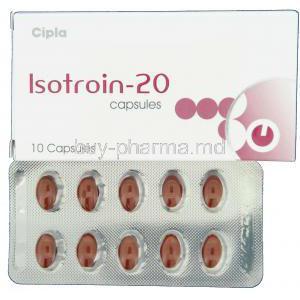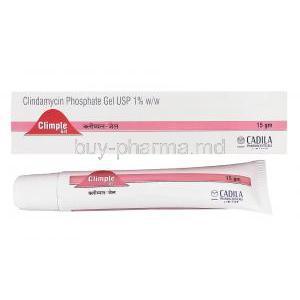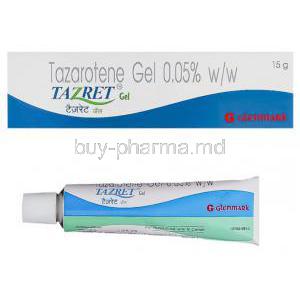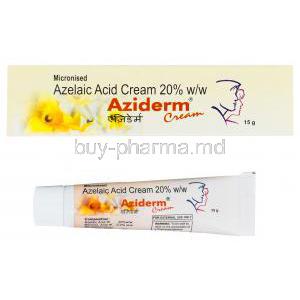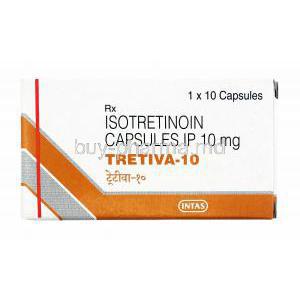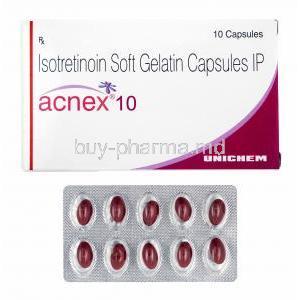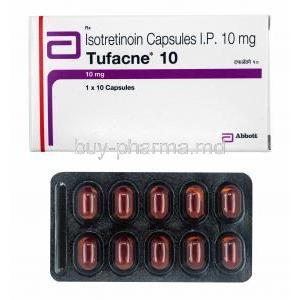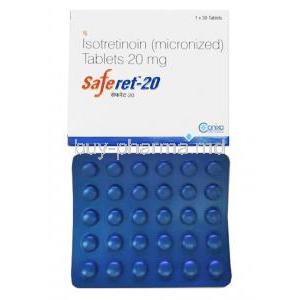1. Introduction to Micotix Shampoo
1.1 What is Micotix Shampoo?
Micotix Shampoo is a medicated topical formulation specifically designed for the treatment of fungal and bacterial conditions affecting the scalp. It is commonly prescribed by dermatologists for managing persistent scalp issues such as dandruff, seborrheic dermatitis, and fungal infections like tinea versicolor. The shampoo combines potent antifungal and antibacterial agents in a synergistic formula that alleviates itching, reduces inflammation, and restores scalp health.
1.2 Overview of Antifungal and Antibacterial Properties
Micotix Shampoo exhibits broad-spectrum antifungal activity against pathogenic yeasts and dermatophytes, while also delivering antibacterial action against gram-positive bacteria. These properties help not only to eradicate microorganisms but also to prevent secondary infections and reduce recurrence.
1.3 Therapeutic Class and Regulatory Status
Micotix belongs to the class of antifungal dermal preparations. It is categorized under over-the-counter or prescription medicated shampoos, depending on its concentration of active ingredients. Regulatory approval varies by country, and in most regions, it complies with dermatologic and cosmetic safety standards.
2. Composition and Active Ingredients of Micotix Shampoo
2.1 Key Active Ingredients
- Ketoconazole: Broad-spectrum antifungal agent that disrupts fungal cell membrane synthesis.
- Zinc Pyrithione: Provides antifungal and antibacterial activity, often used in dandruff treatments.
- Selenium Sulfide: Reduces fungal cell growth and minimizes excessive sebum production.
2.2 Role of Each Component in Dermatological Therapy
Each active component of Micotix Shampoo serves a critical function in scalp therapy. Ketoconazole effectively inhibits fungal proliferation by targeting ergosterol synthesis. Zinc Pyrithione counters microbial colonization and soothes irritated skin. Selenium Sulfide not only exhibits antifungal properties but also helps regulate desquamation and reduce scalp oiliness, making it beneficial for seborrheic conditions.
2.3 Inactive Ingredients and Formulation Additives
The formulation also includes excipients such as sodium lauryl sulfate, fragrance, and stabilizers to enhance lathering, improve product stability, and offer a pleasant sensory experience during use. These additives are dermatologically tested and optimized for compatibility with sensitive scalp types.
Ketoconazole vs Clotrimazole
Ketoconazole and clotrimazole are both antifungal medications used to treat various fungal skin infections like athlete's foot and ringworm. A key difference is that clotrimazole is widely available over-the-counter and typically applied twice daily, while ketoconazole often requires a prescription and is applied once daily. Ketoconazole also has a broader spectrum, treating conditions like tinea versicolor and seborrheic dermatitis, which clotrimazole does not.
Selenium sulfide vs ketoconazole
Both selenium sulfide and ketoconazole are effective antifungal agents commonly used in shampoos for dandruff, seborrheic dermatitis, and tinea versicolor. Selenium sulfide primarily works by reducing skin cell turnover and has antifungal properties, while ketoconazole specifically targets fungal cell membranes. While both are generally well-tolerated topically, some studies suggest ketoconazole may be slightly more potent for severe cases, while selenium sulfide might have a lower incidence of irritation for some users.
Ciclopirox shampoo vs ketoconazole
Ketoconazole is widely available over-the-counter (1% strength) and by prescription (2%), while ciclopirox shampoo is primarily prescription-only. While both work by inhibiting fungal growth, ciclopirox also possesses anti-inflammatory properties that can help soothe irritated scalps, and some studies suggest patients may prefer it for overall signs and symptoms.
Ketoconazole vs miconazole
Ketoconazole and miconazole are both azole antifungal medications that work by inhibiting ergosterol synthesis, a key component of fungal cell membranes. While both are effective for various topical fungal infections like athlete's foot and ringworm, ketoconazole generally has a broader spectrum of activity and is available in more formulations, including shampoos for scalp conditions. Miconazole is frequently used for vaginal yeast infections and oral thrush, often found in over-the-counter creams and suppositories.
3. Mechanism of Action: How Micotix Shampoo Works
3.1 Antifungal Mechanism: Disruption of Ergosterol Synthesis
Ketoconazole and Selenium Sulfide function by inhibiting the synthesis of ergosterol, an essential component of fungal cell membranes. This disruption leads to increased membrane permeability and eventual cell death, effectively eliminating fungal colonies on the scalp.
3.2 Antibacterial and Anti-inflammatory Properties
Zinc Pyrithione exhibits potent antibacterial effects against Staphylococcus and other skin flora that can exacerbate scalp irritation. Furthermore, it exerts anti-inflammatory effects by suppressing cytokine activity and reducing localized erythema, pruritus, and flaking.
3.3 Skin Barrier Protection and Sebum Regulation
Selenium Sulfide aids in restoring the scalp’s lipid balance and reduces sebaceous gland activity, which is often heightened in seborrheic dermatitis. Collectively, the formula supports epidermal barrier repair and mitigates symptoms of scaling and itching.
4. Approved Uses of Micotix Shampoo
4.1 Treatment of Seborrheic Dermatitis
Micotix Shampoo is a first-line treatment for seborrheic dermatitis, an inflammatory skin condition characterized by flaky, greasy patches and redness. Its antifungal activity reduces Malassezia yeast populations, a known trigger of the condition.
4.2 Management of Dandruff and Flaking Scalp
By targeting the root cause of dandruff—fungal overgrowth—Micotix effectively reduces flaking, dryness, and irritation. Regular use helps maintain a healthy scalp microbiome and prevents recurrence.
4.3 Scalp Psoriasis Supportive Therapy
Though not a cure, Micotix is used adjunctively in scalp psoriasis to control scaling and reduce microbial burden, which may worsen inflammation and itching.
4.4 Treatment of Tinea Versicolor and Pityriasis Capitis
Tinea versicolor, a fungal infection causing discolored patches on the skin, and pityriasis capitis, a non-inflammatory form of dandruff, respond well to the antifungal components of Micotix when applied regularly.
5. Off-Label and Investigational Uses of Micotix Shampoo
5.1 Ketoconazole for Fungal Acne
Micotix is occasionally used off-label for Malassezia folliculitis and fungal acne, which present as itchy, acneiform eruptions due to yeast proliferation in hair follicles.
5.2 Adjuvant in Atopic Dermatitis Management
Some dermatologists employ Micotix as a secondary therapy in atopic dermatitis, particularly when secondary fungal colonization is suspected to contribute to flare-ups.
5.3 Scalp Inflammation in Immunocompromised Patients
In patients with HIV/AIDS or cancer undergoing chemotherapy, Micotix may be recommended to prevent opportunistic fungal scalp infections due to their compromised immunity.
5.4 Use in Canine and Feline Dermatologic Conditions (Veterinary Off-Label Use)
Veterinarians occasionally prescribe Micotix Shampoo for companion animals suffering from seborrhea, ringworm, or other dermatophytoses, although such use is off-label and requires clinical supervision.
6. Dosage and Administration Guidelines
6.1 Ketoconazole Dosage
Typically, adults are advised to use Micotix Shampoo twice a week for 2–4 weeks. Maintenance therapy may involve once-weekly application depending on the clinical response.
6.2 Recommended Duration and Frequency of Use
Initial intensive treatment usually spans up to four weeks. Long-term or preventive use should follow physician recommendations to avoid overuse or skin irritation.
6.3 Dosage Adjustments in Chronic or Recurrent Conditions
In chronic dermatoses or frequent relapses, dermatologists may recommend cyclic use—such as one week on, one week off—or alternating with other medicated shampoos.
6.4 Application Instructions and Scalp Contact Time
- Wet hair and scalp thoroughly.
- Apply a sufficient quantity and lather gently.
- Leave in contact for 3–5 minutes to maximize efficacy.
- Rinse thoroughly and avoid contact with eyes.
7. Handling Instructions and Storage Information
7.1 Recommended Storage Conditions
Store Micotix Shampoo at controlled room temperature (15–30°C) away from direct sunlight and moisture. Keep the container tightly closed after use.
7.2 Shelf Life and Expiry Management
Check the expiry date on the bottle. Do not use the product past its expiration to avoid reduced effectiveness or risk of contamination.
7.3 Safe Handling and Disposal Precautions
Avoid disposing of unused shampoo in household drains. Follow local regulations for the disposal of pharmaceutical products to minimize environmental impact.
8. Ketoconazole Interactions
8.1 Interaction with Topical Corticosteroids
Concurrent use with corticosteroids may enhance therapeutic outcomes in inflammatory conditions but should be timed appropriately to prevent counteractive absorption effects.
8.2 Compatibility with Other Scalp Treatments and Shampoos
Micotix should not be mixed with other medicated shampoos during the same wash session. However, it may be used in rotation with moisturizing or tar-based shampoos for comprehensive scalp care.
8.3 Interactions with Oral Antifungals or Antibiotics
No significant systemic interactions are reported due to limited percutaneous absorption. Nevertheless, using both topical and oral antifungals should be done under professional guidance to avoid redundant therapy.
8.4: Interactions with other medications
Ketoconazole can significantly increase the blood levels of many medications by inhibiting their breakdown. This can lead to increased side effects or toxicity of the co-administered drug. Examples include:
- Statins (e.g., simvastatin, lovastatin): Increased risk of muscle problems, including rhabdomyolysis.
- Benzodiazepines (e.g., alprazolam, midazolam, triazolam): Increased and prolonged sedative effects.
- Certain Erectile Dysfunction (ED) drugs (e.g., sildenafil, tadalafil): Can lead to headaches, upset stomach, and muscle pain.
- Immunosuppressants (e.g., cyclosporine, tacrolimus): Increased levels, requiring careful monitoring.
- Anticoagulants (e.g., warfarin, rivaroxaban): Increased risk of bleeding
- Calcium channel blockers (e.g., felodipine, nisoldipine, verapamil): Can cause low blood pressure, dizziness, and swelling.
- Ergot alkaloids (e.g., ergotamine, dihydroergotamine): Can lead to serious vasospasm (ergotism).
9. Ketoconazole Side Effects
9.1 Common Side Effects
Micotix Shampoo is generally well-tolerated, but like all medicated topical treatments, it may elicit certain side effects in some individuals. These effects are typically mild and transient, resolving with continued use or temporary discontinuation.
9.1.1 Scalp Irritation and Dryness
A frequent complaint among users is mild scalp irritation, which may manifest as tightness, dryness, or a tingling sensation after application. This is often due to the desquamating action of antifungal agents or temporary disruption of the scalp barrier.
9.1.2 Itching, Stinging, or Burning Sensation
Some individuals may experience itching or a transient stinging or burning feeling, particularly during the first few uses. This can be intensified if the product is applied to broken skin or left on for longer than recommended.
9.1.3 Hair Texture Changes or Discoloration
Alterations in hair texture, such as increased dryness or coarseness, can occasionally occur. In rare instances, light-colored or chemically treated hair may exhibit discoloration due to prolonged exposure to certain ingredients.
9.2 Rare but Serious Adverse Reactions
Though uncommon, Micotix Shampoo can trigger more severe dermatological or systemic responses in sensitive individuals. Medical attention should be sought if any of the following occur.
9.2.1 Contact Dermatitis
Allergic or irritant contact dermatitis may develop, presenting as erythema, scaling, and vesicular eruptions. Patch testing may be warranted to confirm ingredient-specific sensitivity.
9.2.2 Severe Allergic Reactions and Anaphylaxis
Very rarely, users may develop hypersensitivity reactions, including urticaria, facial swelling, or anaphylactic symptoms such as difficulty breathing and rapid heart rate. Discontinue use immediately and seek emergency care if these symptoms occur.
9.2.3 Systemic Absorption and Associated Toxicity
While topical absorption is minimal, excessive use or application on damaged skin may increase systemic exposure. Symptoms of systemic toxicity are exceedingly rare but may include dizziness, gastrointestinal upset, or hepatic enzyme alterations.
10. Contraindications and Conditions to Avoid Use
10.1 Known Hypersensitivity to Active Ingredients
Micotix Shampoo should not be used by individuals with a known allergy to any of its active or inactive components, including ketoconazole, selenium sulfide, or zinc pyrithione.
10.2 Open Wounds or Severely Inflamed Skin
Application on abraded, ulcerated, or severely inflamed skin should be avoided, as this can increase systemic absorption and exacerbate irritation or burning sensations.
10.3 Contraindicated Dermatologic Conditions
Patients with rare skin conditions such as erythroderma or severe rosacea should avoid use unless specifically advised by a specialist, as active ingredients may worsen these presentations.
11. Important Warnings and Precautions for Safe Use
11.1 Avoiding Contact with Eyes and Mucous Membranes
The formulation is not intended for ocular or mucosal use. Accidental contact with the eyes, mouth, or genitals should be rinsed thoroughly with water to prevent irritation.
11.2 Monitoring for Skin Sensitivity Reactions
Users should be observant for signs of persistent redness, swelling, or blistering. If symptoms persist beyond a few days, discontinue the product and consult a healthcare provider.
11.3 Photosensitivity and UV Exposure Considerations
Certain ingredients may heighten skin photosensitivity. Minimize sun exposure after application and consider using sunscreen or protective clothing to avoid phototoxic reactions.
11.4 Discontinuation Guidelines for Adverse Events
If any severe or persistent adverse reaction is observed, discontinue use immediately. Reintroduction should only be done under medical supervision with proper monitoring.
12. Careful Administration in Special Populations
12.1 Administration in Elderly Patients
12.1.1 Adjusted Application Frequency
Elderly patients often present with reduced skin resilience. A lower application frequency may be recommended to minimize barrier disruption and potential irritation.
12.1.2 Monitoring for Increased Skin Fragility
Age-related dermal thinning may increase susceptibility to trauma or reaction. Scalp integrity should be assessed regularly during prolonged use in this demographic.
12.2 Use in Pregnant Women and Nursing Mothers
12.2.1 Safety Profile During Pregnancy (FDA Category C)
Micotix Shampoo is classified as pregnancy category C. While no definitive human studies confirm harm, its use should be reserved for when the potential benefits outweigh potential fetal risks.
12.2.2 Breastfeeding and Risk of Infant Exposure
Though systemic absorption is minimal, nursing mothers should avoid application near the chest to prevent accidental ingestion by infants during breastfeeding.
12.3 Administration in Children and Infants
12.3.1 Age-Based Limitations
Micotix Shampoo is generally not recommended for children under two years of age unless under the guidance of a pediatric dermatologist.
12.3.2 Pediatric Dosing Considerations
Lower concentrations and shorter contact durations may be advised for children due to higher skin permeability and risk of sensitization.
12.3.3 Supervision and Safety in Use
Children using the product should always be supervised to ensure correct application and to prevent contact with eyes or ingestion.
13. Overdose and Misuse of Micotix Shampoo
13.1 Signs and Symptoms of Accidental Overuse
Overuse may result in excessive scalp dryness, irritation, or chemical burns. Symptoms may include redness, peeling, and increased sensitivity to touch or temperature.
13.2 Emergency Management of Overdose
In the event of accidental ingestion or significant dermal overexposure, immediate medical attention is warranted. Supportive care, including hydration, emollient use, or antihistamines, may be required depending on the severity of symptoms.
13.3 Reporting and Documentation Protocol
Suspected adverse reactions or overdose events should be reported to the national pharmacovigilance authority. Healthcare providers are encouraged to document such incidents for future reference and safety tracking.
Micotix Shampoo FAQ
- What is Micotix shampoo?
- What is Micotix shampoo used for?
- What is miconazole shampoo used for?
- What is miconazole nitrate and Chlorhexidine Gluconate cream used for?
- What is miconazole nitrate and Chlorhexidine Gluconate shampoo used for?
- Can you use miconazole and chlorhexidine together?
- What is chlorhexidine and miconazole?
- How many days should you use miconazole nitrate cream?
- What are the benefits of Chlorhexidine Gluconate cream?
- What is the purpose of miconazole nitrate?
- Is chlorhexidine wash antifungal?
- Does chlorhexidine cure an infection?
- Does miconazole nitrate stop itching?
- Does chlorhexidine heal wounds?
- Is chlorhexidine an antibiotic?
- Is miconazole nitrate safe?
- Is chlorhexidine antibacterial or antifungal?
What is Micotix shampoo?
Pets can benefit from Micotix Shampoo as it assists in controlling seborrhoeic dermatitis and various skin infections, like yeast and fungal issues, alongside ringworm infections.
What is Micotix shampoo used for?
Micotix Shampoo helps to control skin issues like seborrhoeic dermatitis or infections caused by yeast and fungi as well as bacteria and ringworms.
What is miconazole shampoo used for?
It aids in alleviating symptoms of infections (including those linked with yeast and ringworm) while providing comfort to damaged skin.
What is miconazole nitrate and Chlorhexidine Gluconate cream used for?
Miconazole and chlorhexidine are part of a category of medications referred to as 'anti fungal/ anti bacterial' which are employed to address skin conditions, like athlete's foot (ringworm of the foot), jock itch (ringworm of the groin), ringworm, seborrheic dermatitis (flaky skin or dandruff), and bacterial infections.
What is miconazole nitrate and Chlorhexidine Gluconate shampoo used for?
For cats, dogs, or horses experiencing fungal skin infections, treatments such as chlorhexidine or miconazole can be effective.
Can you use miconazole and chlorhexidine together?
Yes
What is chlorhexidine and miconazole?
An antifungal and antimicrobial cleaning solution is used to treat skin infections and enhance the effectiveness of topical antibiotics in cats and dogs.
How many days should you use miconazole nitrate cream?
7 days
What are the benefits of Chlorhexidine Gluconate cream?
It operates by eliminating or inhibiting the proliferation of bacteria on the skin.
What is the purpose of miconazole nitrate?
It is commonly employed in the treatment of fungal or yeast infections that affect the skin.
Is chlorhexidine wash antifungal?
Chlorhexidine is effective in combating forms of bacteria and fungi by rupturing the cell wall and causing cell death.
Does chlorhexidine cure an infection?
Yes
Does miconazole nitrate stop itching?
Yes
Does chlorhexidine heal wounds?
No
Is chlorhexidine an antibiotic?
Chlorhexidine is widely utilized as an agent in topical antiseptic applications.
Is miconazole nitrate safe?
Yes
Is chlorhexidine antibacterial or antifungal?
Chlorhexidine is categorized as part of a class of medications known as antiseptic antibacterial agents.

